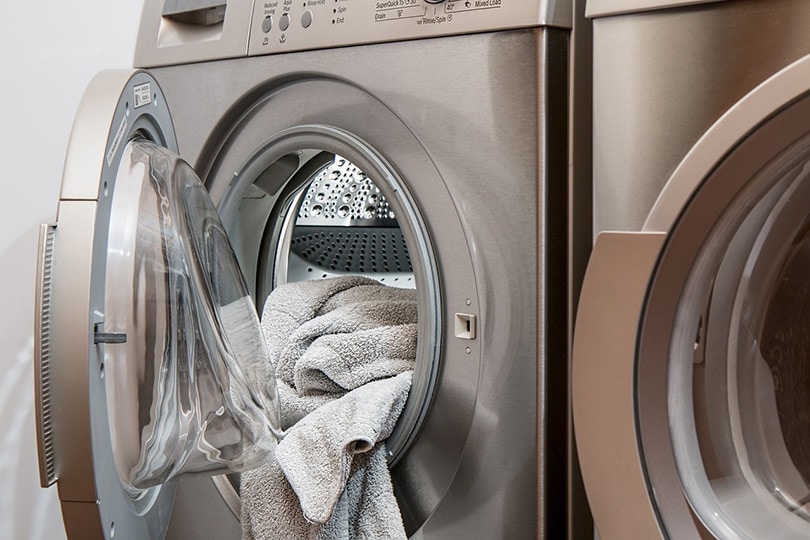How Much Does It Cost to Run a Dryer? What You Need to Know!
-
Ed Malaker
- Last updated:

Dryers are an essential appliance for many people, especially during the winter or if you have a large family that makes hanging everyone’s clothes on the line difficult. However, if you’re getting your first dryer or haven’t had one in a while and would like to know how much it would cost to run one, you have come to the right place. Here, we look at the average cost of running a dryer, discuss a few of the things that can affect the price, and help you determine how to calculate the cost using the information on the packaging so you can make an informed purchase.
The Importance of Determining the Cost of Running a Dryer
Learning how much a dryer will cost to run before you purchase one will help you budget for it. It might also help you determine how large a dryer you can afford since a larger dryer usually costs more money to run. Learning how to calculate the cost can help you determine how efficient certain units are and choose between different models.

How Much Does Running a Dryer Cost?
It costs most Americans between $0.15 and $0.45 per load to dry their clothes, depending on how large their dryer is and if a load of clothes gets dry in about an hour. This cost is quite a savings over the laundromat, which usually charges about $0.25 for 6 minutes of drying time, and it usually takes at least 45 minutes to get the clothes dry, for a total cost of close to $2.
How Can I Determine the Cost of Running My Dryer?
You can determine the cost of running your dryer by following a few easy steps.
- Look at the packaging or read the owner’s manual to determine how many watts your dryer uses. Multiply that number by the number of hours that you anticipate using the dryer. Then, divide that number by 1,000 to get the kilowatt-hours (kWh). If you typically dry your clothes for about an hour, it’s even easier. Divide the watts by 1,000 to get the per-load kWh.
- Multiply the kWh of your dryer by the cost of 1 kWh. You will find this number on your electric bill, which can vary significantly from state to state. Many states charge $0.10 to $0.15 per kWh, but several states charge more than that, and some, like Alaska and Hawaii, can charge $0.20 or even $0.30 per kWh.
Using this formula, we can see that a 1,000-watt dryer will cost $0.10 to $0.15 per hour in many parts of the country. Doing eight loads of laundry per week will cost about $1.20 ($0.15 * 8), which totals $4.80 per month and $57.60 per year.

Cost of Running a Dryer
| Machine Watts | Hours of Operation per Week | Monthly cost (using $0.15 average kWh) |
| 800 | 5 | $2.40 |
| 800 | 10 | $4.80 |
| 1,000 | 5 | $3.00 |
| 1,000 | 10 | $6.00 |
| 1,500 | 5 | $4.50 |
| 1,500 | 10 | $9.00 |
Additional Costs to Anticipate
Dryer Vent
Fortunately, there are not many additional costs associated with operating a dryer once you have it running. However, one exception is that you will need to connect an existing dryer vent or install a new one so the warm air can move through the dryer to the outside of your home. If you are replacing an old dryer, there is a good chance that you have one in place, but we recommend inspecting it carefully for holes or clogs that can reduce its effectiveness and even create a fire hazard. Replace it with a new one if it shows signs of wear. Usually, the vent is not expensive, but if you need to hire a professional to install it the first time, the cost can range from $150 to $250, with the average falling right around $200.
Dryer Plug
Another additional expense that you may face when purchasing a new dryer is that not all come with the power cord to plug it in. The delivery drivers will not install your dryer without one, so check with the sales clerk to see if you also need a power cord when you purchase your dryer. Luckily, most big home improvement centers automatically add it on when you purchase the dryer.

How Often Should I Replace My Dryer?
While many people wait until the unit breaks down before purchasing a new one, experts agree that it’s better to replace your unit with a newer model every 10 years. Many units start to break down after that much time has passed, and a sudden failure can leave a homeowner unprepared and without the funds to replace it. Setting up a proactive schedule can help you budget for future replacements so they don’t surprise you. Many people will also replace their dryer when they notice that it isn’t drying clothes as effectively as it used to.
What to Do to Keep Your Dryer Running Longer
- Clean your lint screen after every load. Lint buildup is a fire hazard that can damage your dryer and home. A clogged screen will also make the dryer less efficient, requiring it to work longer to do the same job.
- Dry full loads of laundry when possible because smaller loads waste energy and add wear and tear to the machine. However, don’t overfill the machine, as this reduces circulation and strains the motor.
- Hang your clothes on a clothesline whenever possible to reduce the number of loads that your dryer must dry each week.
- Dry your clothes during off-peak hours, when many energy companies offer a discount on the cost of electricity.
- Upgrading your dryer at regular intervals will help you purchase more efficient units that are better for the environment.

Conclusion
Most people will spend about $0.15 to dry a load of laundry, depending on the size of your machine. Large machines will use more power, but you can dry more clothes at once, while small models will save on energy but might be impractical for big families due to the number of loads that need to be done. Always fill the machine, inspect the vent often, and replace the dryer every 10 years to improve efficiency and reduce the risk of a surprise breakdown.
Featured Image Credit By: Zivica Kerkez, Shutterstock
Contents
